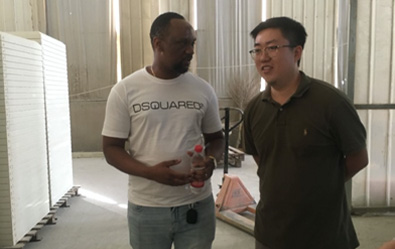loading...
- No. 9, Xingyuan South Street, Dongwaihuan Road, Zaoqiang County, Hengshui, Hebei, China
- admin@zjcomposites.com
- +86 15097380338
- Welcome to visit our website!
Exploring the Benefits and Applications of FRP Reinforcement Bars in Construction
The Rise of FRP Reinforcement Bars in Construction
In the ever-evolving world of construction, the search for innovative materials that enhance performance while reducing environmental impact has gained unprecedented momentum. Among these innovations, Fiber Reinforced Polymer (FRP) reinforcement bars have emerged as a revolutionary alternative to traditional steel reinforcement bars. This shift is driven by the unique properties of FRP materials, including their corrosion resistance, lightweight characteristics, and high tensile strength.
What are FRP Reinforcement Bars?
FRP reinforcement bars are composite materials made from a polymer matrix reinforced with fibers, such as carbon, glass, or aramid. These materials are designed to provide structural support in concrete applications, aiming to improve durability and longevity while minimizing maintenance costs. The manufacturing process involves combining polymer resins with fibers, resulting in a product that is not only strong but also resistant to harsh environmental conditions that typically affect steel.
Advantages of FRP Bars
1. Corrosion Resistance One of the most significant advantages of FRP bars is their resistance to corrosion. Unlike steel, which can rust and deteriorate in the presence of moisture and salts, FRP bars maintain their integrity over time. This makes them an ideal choice for construction in coastal areas, bridges, and structures exposed to chemicals.
2. Lightweight FRP bars are considerably lighter than traditional steel reinforcement, making them easier to handle and transport. This lightweight characteristic can lead to simpler installation processes, reduced labor costs, and overall savings in the construction project.
3. High Strength-to-Weight Ratio Despite being lightweight, FRP bars possess high tensile strength, allowing them to carry significant loads relative to their weight. This feature enables engineers to design structures that are both efficient and safe while using less material than traditional methods.
4. Non-Magnetic and Non-Conductive The non-magnetic nature of FRP bars makes them suitable for specific applications, such as in structures where magnetic interference needs to be minimized. Moreover, their non-conductive properties can enhance safety in environments where electrical conductivity is a concern.
frp reinforcement bars

5. Sustainability As the construction industry increasingly shifts its focus toward sustainability, FRP bars offer an eco-friendly alternative to steel. They require less energy to produce and can be made from recycled materials. Additionally, being corrosion-resistant, structures built with FRP bars have longer lifespans, further reducing the need for replacement and minimizing environmental impact.
Applications of FRP Bars
FRP reinforcement bars are versatile and can be applied in a variety of construction scenarios. They are commonly used in
- Bridges Their lightweight nature and resistance to corrosion make FRP bars ideal for bridge reinforcement, contributing to longer-lasting structures that require less maintenance. - Marine Structures Due to their excellent resistance to saltwater and other corrosive elements, FRP bars are increasingly used in piers, docks, and other marine applications. - Parking Structures In parking garages where de-icing salts are often present, FRP reinforcement helps mitigate the risk of structural failure due to corrosion. - Industrial Applications FRP bars find their place in industrial settings, including chemical plants and waste treatment facilities, where exposure to harsh chemicals can accelerate the degradation of traditional materials.
Challenges and Future Prospects
Despite their numerous advantages, the widespread adoption of FRP reinforcement bars is not without challenges. The higher initial cost of FRP materials can deter some projects, especially those with tight budgets. Moreover, there is a need for ongoing research to fully understand their long-term behavior and to establish standardized codes for their use in construction.
As technology advances and the construction industry becomes more committed to sustainability, the acceptance and integration of FRP reinforcement bars are expected to grow. With continued development, these innovative materials hold the potential to redefine the standards of strength and durability in modern construction, paving the way for more resilient infrastructures.
In conclusion, FRP reinforcement bars represent a significant leap forward in construction materials, offering a blend of strength, durability, and environmental sustainability. As the industry embraces these advancements, the future of construction looks promising, with FRP bars at the forefront of this transformation.
-
GRP Structures: The Future of Lightweight, High-Performance EngineeringNewsJun.20,2025
-
FRP Water Tank: High-Performance Storage for Corrosive and Clean Water SystemsNewsJun.20,2025
-
FRP Square Tube: The New Industry Standard for Chemical and Structural ApplicationsNewsJun.20,2025
-
FRP Pultruded Profiles: The Ultimate Choice for Lightweight Structural StrengthNewsJun.20,2025
-
FRP Handrails: The Safer, Smarter, and Stronger Choice for Modern InfrastructureNewsJun.20,2025
-
FRP Grating: The Smart Solution for Durable, Lightweight Industrial FlooringNewsJun.20,2025
-
Why Choose a Galvanized Water Tank for Your Storage NeedsNewsMay.21,2025
